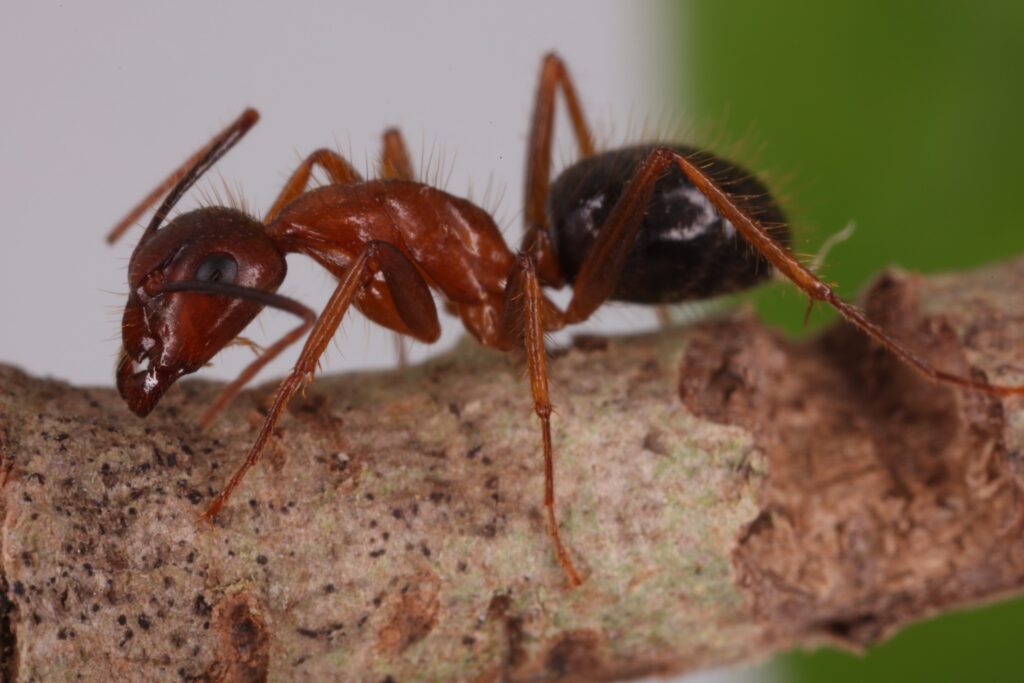
Carpenter Ants (Camponotus spp.)
Carpenter ants are destructive ants that build their nests inside the wood.
Unlike termites, carpenter ants do not consume wood. However, workers chew through it, creating galleries with their mandibles. They use the damaged wood to build their nests, using the galleries (tunnels) to travel from one section to another. Due to their destructive nature and physical features, carpenter ants and termites are often confused, although several characteristics can help differentiate one from the other.
Carpenter Ants vs. Termites
Physically speaking, reproductive carpenter ants do look similar to reproductive subterranean termites (both called swarmers). They are small, winged insects that destroy and use damaged wood for their benefit. However, if you look up close, carpenter ants have a slightly different anatomy.
- Waist: Carpenter ants have three distinct body parts: the head, the thorax, and the abdomen. The division between the thorax and abdomen with the single node (petiole) gives carpenter ants the appearance of a thin waist. Termites only have two distinct body parts, although still made up of a head, thorax, and abdomen. On termites, the thorax and abdomen are not as distinctly separated, giving them the appearance of a broad waist.
- Antennae: Carpenter ants have elbowed or bent antennae contrary to the straight or slightly curved antennae of termites.
- Wings: Carpenter ants possess two sets of unequal-sized wings, having larger forewings and smaller hind wings. Termites have two pairs of equal-sized transparent wings that can be twice as big as the body.
- Color: Carpenter ant workers are usually red or dark in color. You can sometimes see them outside the nest looking for food. Non-alate termites are typically hard to spot outside their nest and are generally lighter in color.
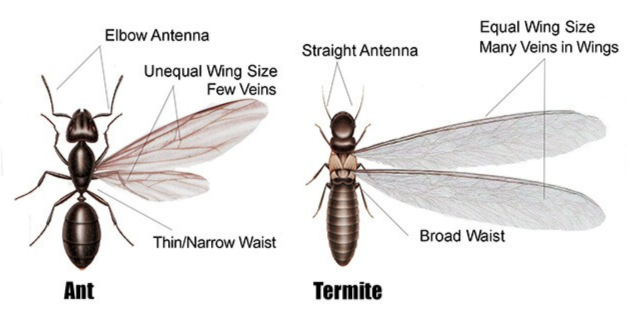
Life Cycle
The carpenter ant life cycle begins when winged reproductive ants (called swarmers) leave their colony to mate in hopes of establishing a new one. Swarming typically occurs in the spring or summer, although this depends on the species and local environmental conditions. After mating, the males quickly die while the females (future queens) shed their wings and search for safe locations to establish new colonies. Safely inside, the new queen will find a secure area to lay her eggs. The queen’s ability to lay eggs is essential for colony growth and survival.
The ants go through a complete metamorphosis, meaning they have four distinct life stages: egg, larva, pupa, and adult. The eggs are tiny and white and usually hatch within a few weeks. Once hatched, the larvae emerge and are cared for by worker ants. The larvae grow by molting several times, gradually increasing in size. After reaching their maximum size, the larvae spin cocoons and enter the pupal stage. During this time, the pupae undergo metamorphosis, transforming into adult ants. The duration of the pupal stage varies depending on factors such as temperature and nutrition. Once the adults emerge, they take on various roles within the colony, such as foraging for food, caring for the young, and expanding the nest. A carpenter ant colony can take 3-6 years to become large and stable.
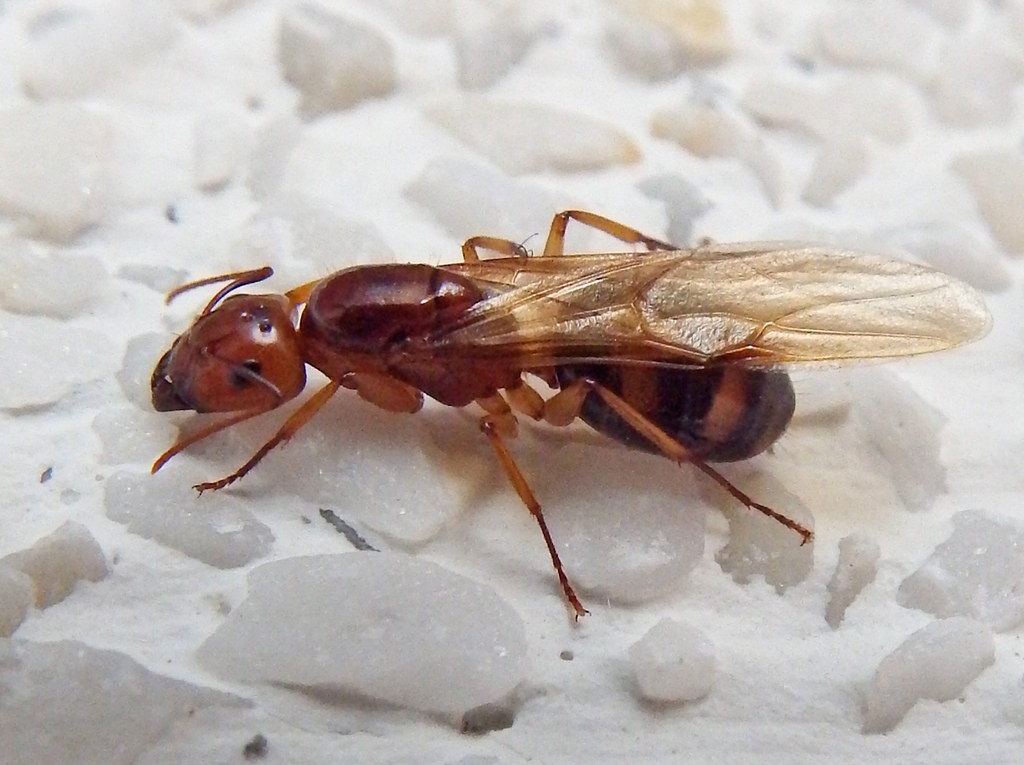
Carpenter Ant Habits
Carpenter Ants have distinct habits that distinguish them from other ant species. While they do not consume wood as food, they are able to excavate tunnels and galleries within wooden structures. They nest in moist or decaying wood, including tree stumps, logs, and buildings. In urban areas, they can infest buildings, including wooden beams, windowsills, door frames, and attics. They are particularly attracted to areas with high moisture levels, such as areas affected by water leaks or damaged wood exposed to rain or humidity.
Their feeding habits range from insects and plant materials to sweets and protein-rich substances. Workers leave the nest to forage for food, often traveling considerable distances from the colony. While they are primarily nocturnal, with increased activity during the night, worker ants can also be seen foraging during the day. This is especially true when establishing satellite nests or food sources are abundant. Overall, their nesting habits and destructive potential make carpenter ants a concern for homeowners and businesses alike.
Where to Find Carpenter Ants in the US
Found throughout the United States, their distribution may vary based on the species. Some common species in the U.S. include the black carpenter ant (Camponotus pennsylvanicus) and the Florida carpenter ant (Camponotus floridanus). These ants can thrive in various environments, including both urban and rural areas. Here is some additional information about the presence of carpenter ants in the U.S. by region:
- Northeast Region: The wooded areas and older homes provide suitable nesting sites.
- Midwest Region: The abundance of forests, wooden structures, and humid conditions make the region conducive to carpenter ant infestations.
- Pacific Northwest Region: The moist climate, dense forests, and abundance of older wooden structures contribute to their thriving populations.
- Southeast Region: The warm and humid conditions create suitable habitats for carpenter ants.
- Southwest Region: While carpenter ants are less prevalent in the arid Southwest, they can still be found in certain areas. States such as Texas, Arizona, and New Mexico may have localized populations where conditions are favorable, such as near water sources or in urban areas with wooden structures.
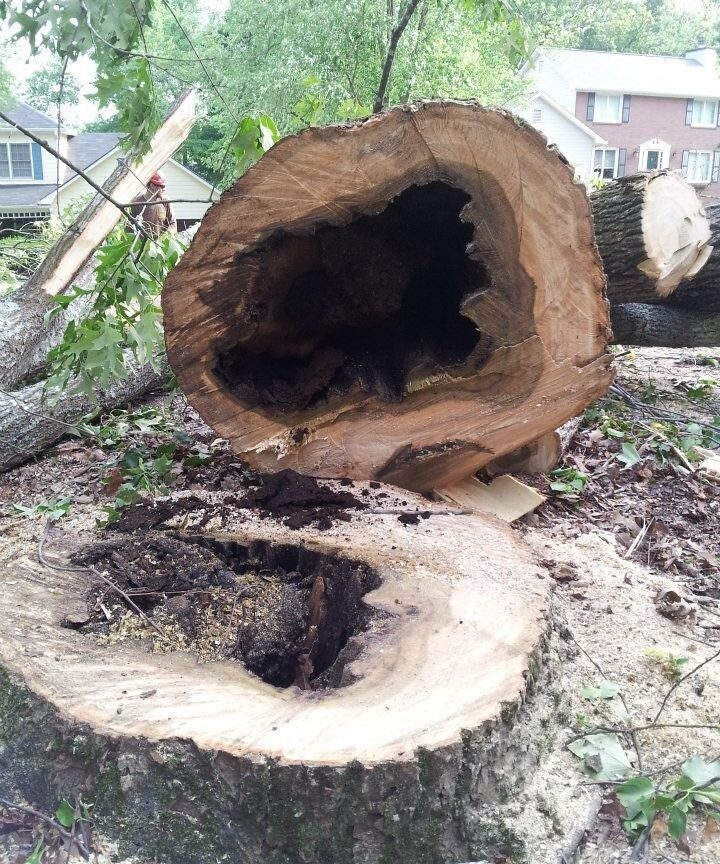
Signs of Infestation
While carpenter ants can be just as destructive as termites, the damage is typically less severe and takes longer to evolve than termites. Regardless, it is always best to prepare and know what to look for when it comes to wood-destroying insects. The earlier you can catch and address the problem, the less severe the damage could be.
Like termites, swarmer carpenter ants also shed their wings, leaving them near window frames, baseboards, and vents. You may also notice workers when they enter the home searching for a food source. While this can mean a large infestation is underway, it is still a way to recognize the problem. If the nest is already inside, you may see these flying ants around the windows and sometimes outside. If this is the case, it is most likely there is a mature colony somewhere on the property.
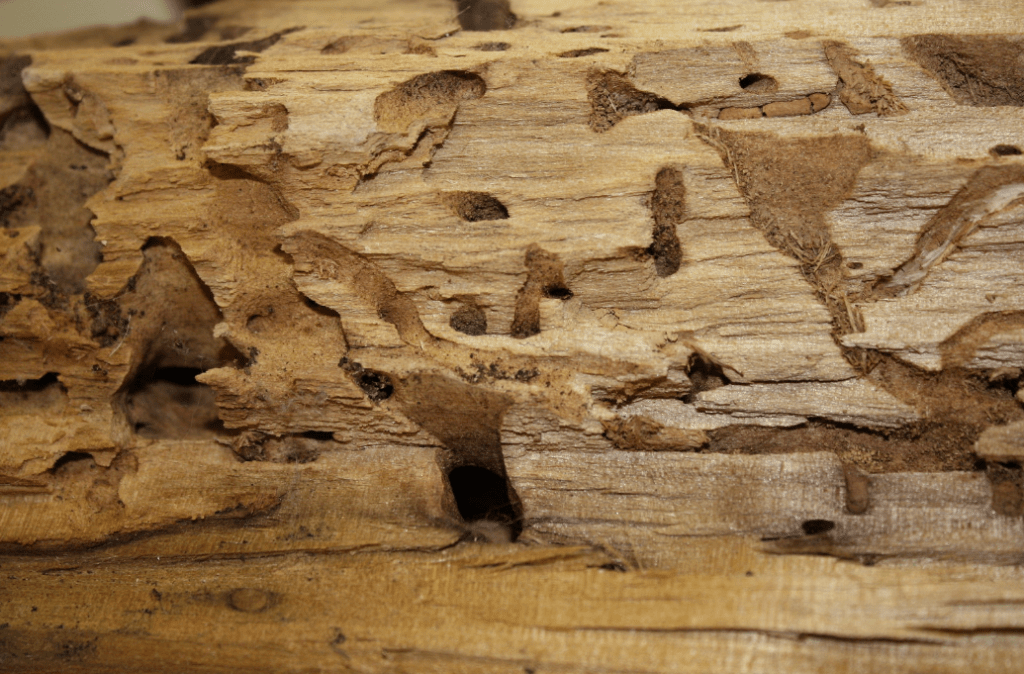
Another visible sign of carpenter ants is frass (chewed-up wood) found in piles outside the nest. Since carpenter ants do not eat wood, they remove it through tiny kick-out holes. You can typically find these piles of frass near window or door frames, areas damaged by water, and roof lines. The composition of this frass is different from termite frass. Carpenter ant frass looks more like wood shavings, resembling something similar to sawdust. Although the color depends on the type of wood being foraged, it is also generally lighter in color.
The physical appearance of the wood damaged by carpenter ants is also quite noticeable compared to that of termites. Much like termites, the damage may not initially be visible on the outside of the wood. Once opened up, you may notice clean galleries that look like dashes and dots. The galleries seem clean since the carpenter ant does not need any contact with the soil. Exposure will also show that these tunnels look smooth as if sanded with sandpaper.
Damage and Dangers of Carpenter Ants
Although the damage carpenter ants cause is less severe than that of termites, it should not be left untreated. If left unnoticed and untreated, carpenter ants can still cause structural damage. Their destruction can cause support beams to weaken and wood framing to warp. Consequently, the homeowner may notice stuck doors and windows, warped floors, sinking ceilings, or bulging walls. If the infestation reaches this point, critical damage has already been done and could cost the homeowner more than they want to pay.
As for potential harm caused to humans, be aware that carpenter ants can bite if they feel their nests are being disturbed. Since they are physically a bit larger than termites, their bite can break the skin. On top of that, they are capable of releasing a defense chemical. If sprayed into the wound, this chemical can increase the pain. However, while their initial bite may hurt, remember that carpenter ants don’t bite that often. Biting is only a defense mechanism rather than a tactic to harm humans.
Regardless of the signs, if you suspect a carpenter ant infestation in your home, MABI recommends contacting your local pest control professional to assess and inspect the problem.